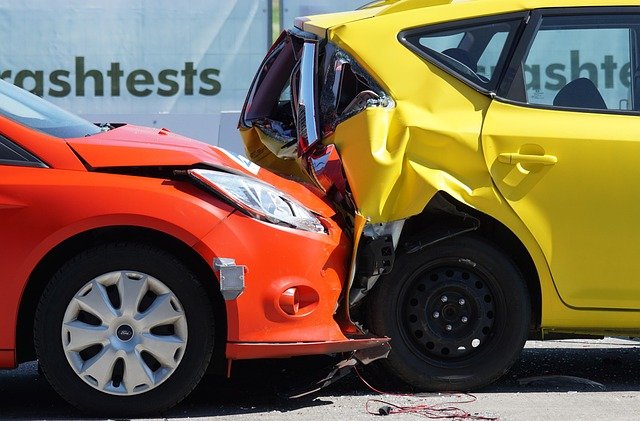Understanding Car Insurance Coverage: What Every Driver Should Know
Car insurance serves as a financial safety net that protects drivers from unexpected costs associated with vehicle accidents, theft, and damage. While mandatory in Australia, many drivers remain unclear about what their policies actually cover and how different types of coverage work together to provide comprehensive protection. Understanding the nuances of car insurance coverage helps drivers make informed decisions about their protection needs and ensures they're adequately covered when incidents occur.

Car insurance represents one of the most important financial decisions drivers make, yet many people purchase policies without fully understanding what they’re buying. In Australia, having at least third-party property insurance is legally required, but the variety of coverage options available can be overwhelming for both new and experienced drivers.
What Does Car Insurance Coverage Actually Include?
Car insurance policies typically consist of several components that work together to provide financial protection. Third-party property coverage, the minimum legal requirement, covers damage you cause to other people’s vehicles and property. Third-party fire and theft adds protection for your own vehicle against fire damage and theft. Comprehensive coverage extends protection to include damage to your own vehicle from accidents, weather events, vandalism, and other incidents.
Most policies also include additional benefits such as emergency roadside assistance, rental car coverage while your vehicle is being repaired, and coverage for personal belongings stolen from your car. Understanding these inclusions helps drivers appreciate the full value of their insurance investment.
Exploring Vehicle Protection Plans: Safeguarding Your Investment
Vehicle protection plans extend beyond traditional insurance to offer comprehensive safeguarding for your automotive investment. These plans often include extended warranty coverage, mechanical breakdown insurance, and gap insurance that covers the difference between your car’s actual value and what you owe on financing.
Protection plans may also incorporate routine maintenance coverage, which helps manage ongoing vehicle care costs. Some plans offer new car replacement coverage, ensuring you receive a brand-new vehicle if your car is written off within a specific timeframe after purchase. These additional layers of protection provide peace of mind for drivers who want comprehensive coverage for their significant automotive investment.
Comprehensive vs. Basic Car Insurance: Choosing the Right Option
The decision between comprehensive and basic car insurance depends on several factors including your vehicle’s value, your financial situation, and your risk tolerance. Basic third-party property insurance costs significantly less but offers minimal protection for your own vehicle. This option might suit drivers with older, lower-value cars who can afford to replace their vehicle if necessary.
Comprehensive insurance provides extensive coverage but comes at a higher premium cost. This option makes sense for newer vehicles, financed cars, or situations where replacing your vehicle would create financial hardship. Comprehensive policies also offer greater peace of mind through broader protection against various risks and typically include additional benefits that basic policies lack.
How Vehicle Protection Plans Help Reduce Repair and Maintenance Costs
Vehicle protection plans can significantly impact your long-term automotive expenses by providing predictable costs for repairs and maintenance. Extended warranty coverage protects against expensive mechanical failures that occur after your manufacturer’s warranty expires. This coverage can save thousands of dollars on major repairs such as engine or transmission problems.
Maintenance plans help budget for routine services by spreading costs over time through regular payments. These plans often include scheduled services, oil changes, and basic repairs, making vehicle ownership more financially predictable. Some protection plans also offer preferred pricing at approved service centers, further reducing your overall maintenance expenses.
| Insurance Type | Provider | Coverage Level | Annual Cost Estimation |
|---|---|---|---|
| Third Party Property | RACV | Basic legal minimum | $200 - $400 |
| Third Party Fire & Theft | NRMA | Moderate protection | $400 - $700 |
| Comprehensive | Budget Direct | Full coverage | $800 - $1,500 |
| Comprehensive Plus | Allianz | Premium features | $1,200 - $2,200 |
Prices, rates, or cost estimates mentioned in this article are based on the latest available information but may change over time. Independent research is advised before making financial decisions.
Understanding Policy Exclusions and Limitations
Every car insurance policy contains exclusions and limitations that define when coverage doesn’t apply. Common exclusions include damage caused by racing, driving under the influence, or using your vehicle for commercial purposes without appropriate coverage. Understanding these exclusions prevents unpleasant surprises when making claims.
Policy limitations might include caps on rental car coverage, restrictions on repair shop choices, or requirements for using genuine parts versus aftermarket alternatives. Reading and understanding your policy documents ensures you know exactly what protection you have and any conditions that must be met for coverage to apply.
Car insurance coverage extends far beyond meeting legal requirements, offering drivers various levels of financial protection and peace of mind. By understanding the different types of coverage available, comparing comprehensive versus basic options, and considering additional vehicle protection plans, drivers can make informed decisions that align with their needs and budget. Taking time to understand your coverage ensures you’re adequately protected while avoiding unnecessary costs or coverage gaps that could prove expensive later.




